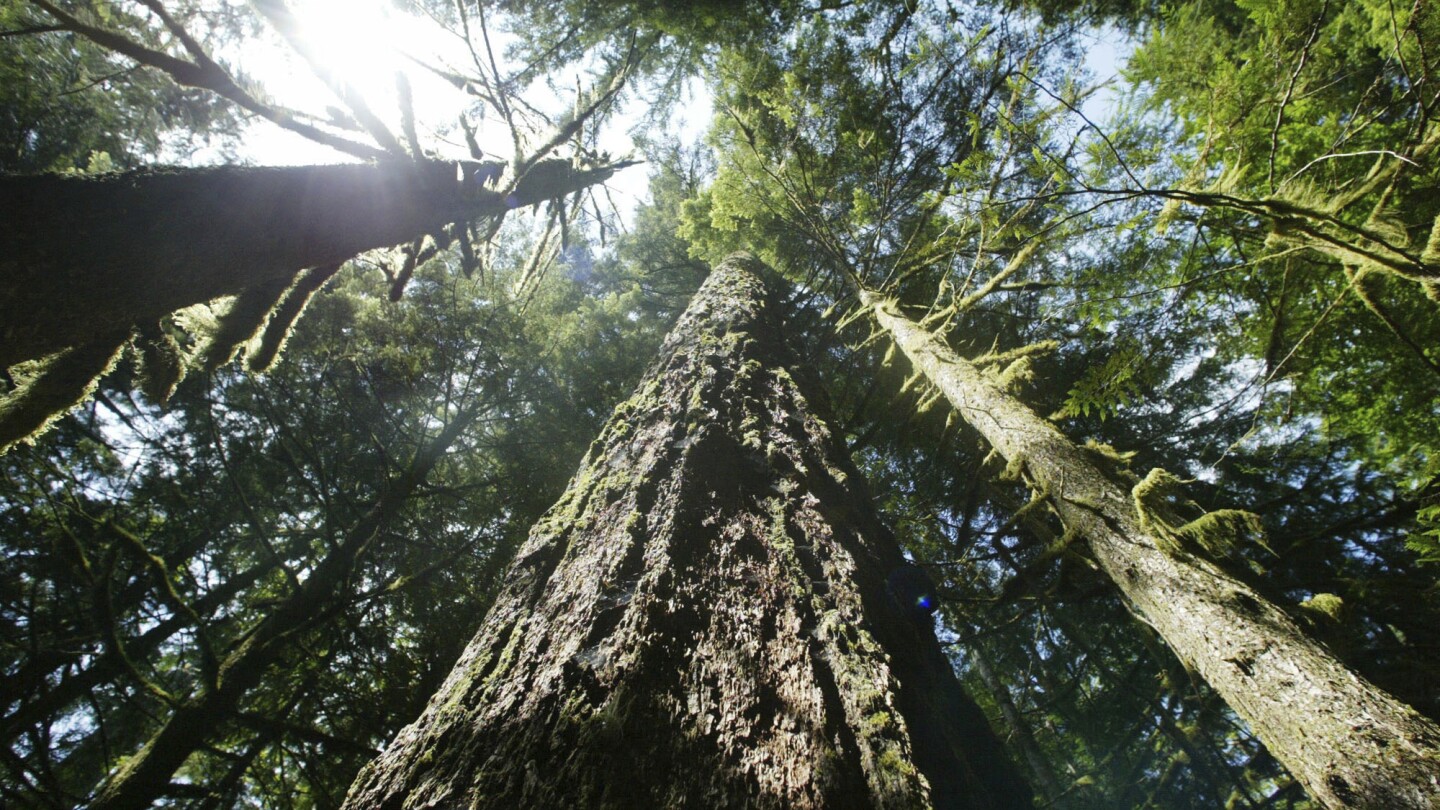U.S. officials would allow increased logging on federal lands across the Pacific Northwest in the name of fighting wildfires and boosting rural economies under proposed changes to a sweeping forest management plan that’s been in place for three decades.
The U.S. Forest Service proposal, released Friday, would overhaul the Northwest Forest Plan that governs about 38,000 square miles (99,000 square kilometers) in Oregon, Washington and California.
The plan was adopted in 1994 under President Bill Clinton amid pressure to curb destructive logging practices that resulted in widespread clearcuts and destroyed habitat used by spotted owls. Timber harvests dropped dramatically in subsequent years, spurring political backlash.
But federal officials now say worsening wildfires due to climate change mean forests must be more actively managed to increase their resiliency. Increased logging also would provide a more predictable supply of trees for timber companies, officials said, helping rural economies that have suffered after lumber mills shut down and forestry jobs disappeared.
Yes, let’s slow forest fires by stripping the Pacific NW of its major carbon sink instead of clamping down on BIG OIL … a solution that doesn’t even begin to deal with the reason for the major fires – global warming.
The stupidity seems to be strong here.
Couldn’t agree more. Fixing what is not broken… did that ever worked ?
Need better forest management.
The problem (except for climate change), is that historically these forests would have small burns every year or two which didn’t impact the trees, but kept shrubbery and dead wood in check.
We’ve become hypervigilant and put out those fires now. Which means we have tons of shrubbery and dead wood accumulated over decades, which would normally naturally be burned away every year or two, but we can’t burn it now, because it’s so much mass that the heat would reach a temperature that would also burn the trees.
So instead we’re stuck in this horrible hypervigilant loop, and when there’s a fire that inevitably happens and we can’t control, again because so much dead wood and shrubbery was left to accumulate, it destroys entire forests and ecosystems.
Logging is not the answer, the answer is at this point rather beyond our reach, as we’ve passed the tipping point. There is no going back without just giving up immense tracts of forest to fire.
I didn’t say logging. I said forest management.
We need to control the brush and dead wood, indigenous fire control practices were very effective at this.
Indeed. They were.
This is a very complicated issue. It’s absolutely true that there has been decades to centuries of forest mismanagement in the western US, which, combined with extreme heat and drought from climate change, has led to increased wildfire severity.
Logging potentially could help manage the forest in a better way, but only if it’s done correctly. Unfortunately, I have little faith this will be done. The thinning that’s needed should be focused on smaller trees and shrubs while leaving larger trees to grow—large, well spaced trees are actually extremely fire resistant. It’s usually dense stands of smaller trees that create intense wildfires.
The issue arises in that these smaller fuels are not particularly valuable to harvest, and the larger trees are where the money is. For-profit companies will always lobby for taking more larger trees which can actually make things worse by opening space for smaller plants to grow.
So overall the devil is in the details here. Especially as the forest service shifts to a more pro-industry leadership under Trump I doubt they will too careful to follow the science over profits.
https://www.streetroots.org/sites/default/files/Clear-cutting at Cannon Beach Coast.gif
Sure log more. They’re already harvesting stupid small trees already because they’re cutting things down at a rate faster than the trees can grow.
Pecker poles are rarely used for lumber. They’re mostly chipped for the paper industry.
That’s nice, they’re still taking out hundreds of square acreage at a time of it.






